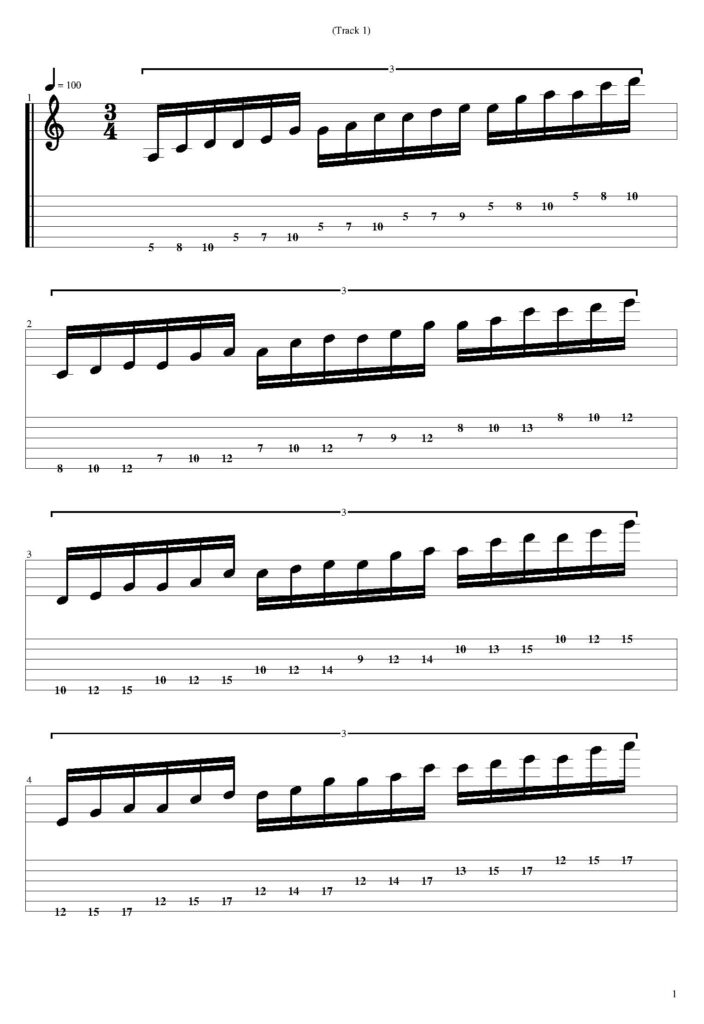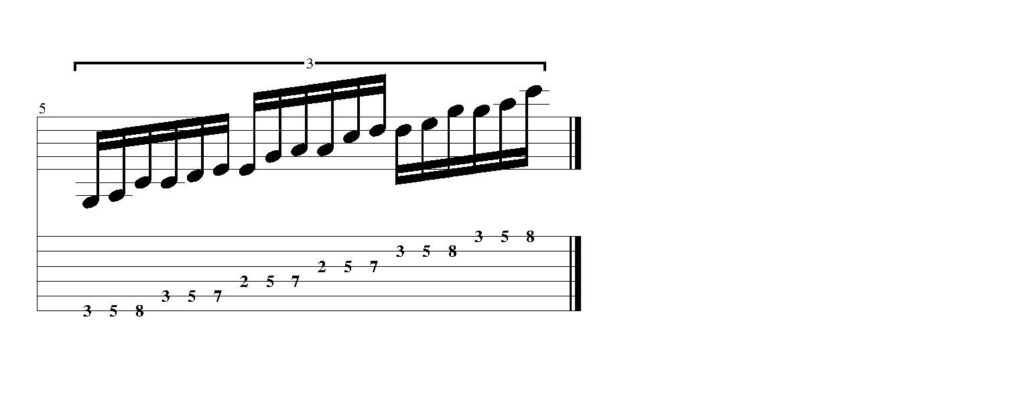These are 3 notes per string pentatonic scale shapes. The patterns are easy to memorize, and make the pentatonic scale even more fun to use.
I suggest having a very good grasp on the 5 shapes of A minor pentatonic before you dive into these shapes.
After you look at the shapes you’ll read a short lesson on how to use them.
Table of Contents
3 notes per string pentatonic scale tabs and notation
This is played using the A minor pentatonic scale. However, like any other scale, it can be transposed.
Shapes 1, 2, 3 and 4

Shape 5

3 notes per string pentatonic scale PDF
Using 3 notes per string pentatonic shapes
We all love the typical 2 notes-per-string pentatonic scale shapes, so why would we even want to look into learning the 3 notes-per-string shapes?
Breaking out of the pentatonic box
You can break out of typical pentatonic box shapes by extending the range of your pentatonic scale, which is exactly what you’re doing when you use 3-notes-per-string pentatonic scale shapes.
Combining pentatonic positions (important)
And here’s a tip: Combine pentatonic positions. For example, start by memorizing shapes 1 and 5, then move back and forth between them in sets of 2 strings.
Start by playing the 3 notes on the Low E string of shape 5, then play the 3 notes on the A string of shape 1. Continue to do this with each set of 2 strings: E&A, A&D, D&G, G&B, B&e.
Epic legato lines
You can construct some epic legato lines with these shapes if you have a good grip on using hammer-ons and pull-offs. You can draw inspiration from under-the-radar shred guitar icons like Rick Graham, Shawn Lane, Brett Stine, Scott Stine, Todd Duane, and Derek Taylor.
Faster pentatonic licks
Using 3-notes-per-string shapes incorporates 3 fingers on single strings, rather than 2, which is arguably more efficient for playing fast licks and phrases.
Economy picking
Economy picking is ideal for playing an odd number of notes per string, which makes it an ideal candidate for playing these shapes.
Soloing and lead guitar versatility
Lastly, you’ll diversify your lead guitar techniques and repertoire by memorizing these pentatonic shapes.
You won’t sound like every other guitar player on the block who’s stuck in 2-notes-per-string pentatonic limbo.

